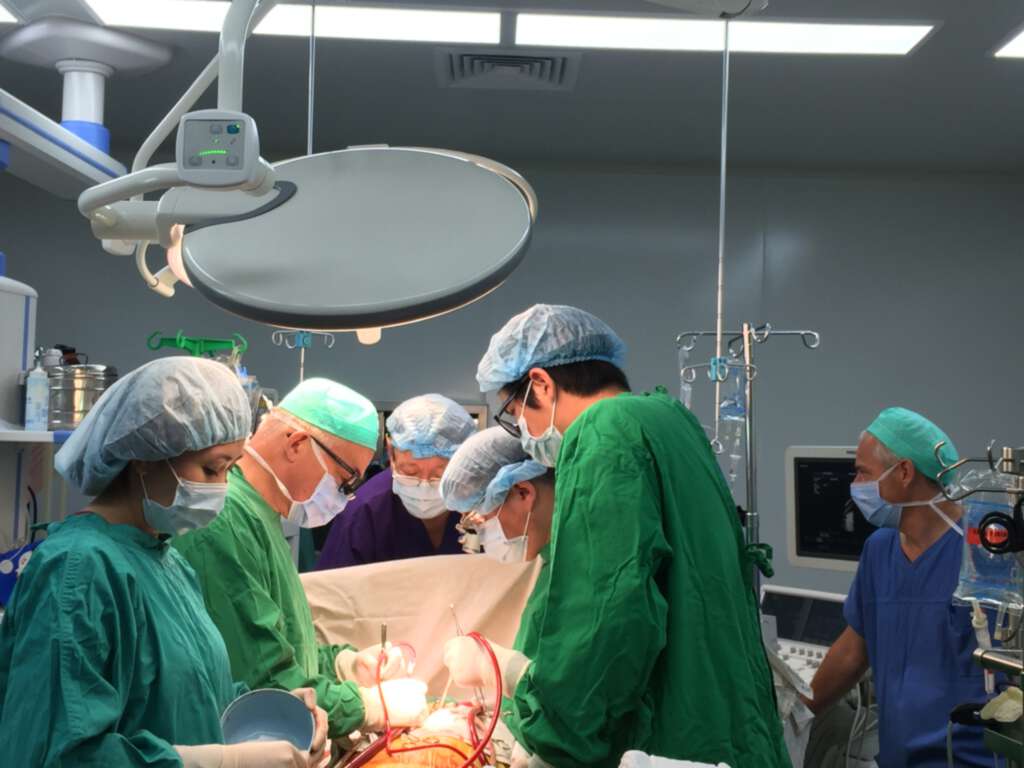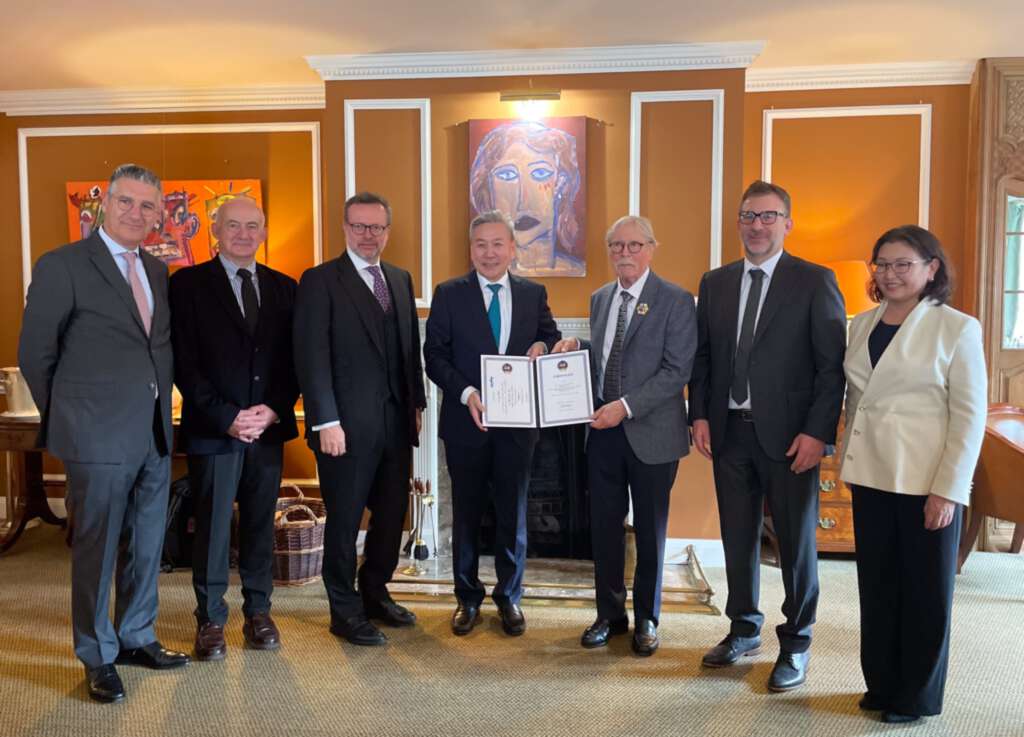Information
- Country
- Mongolia
- Sector
- Health
- Implementation period
- 21 October 2022 - 20 October 2027
- Total duration
- 60 months
- Total budget
- 5,600,000 EUR
- Contribution breakdown
-
- Luxembourg Government
5,600,000 EUR

In Mongolia, cardiovascular diseases (CVD) are a priority public health problem. This incited the government of Luxembourg to assist the government of Mongolia with the control of CVD, since the year 2001.
Project MON/007 is the 5th phase of the intervention after MON/002, MON/003, MON/005 and MON/006. The support started on strengthening the referral system of cardiology and cardio-vascular services, both at provincial and central levels, to adequately treat referred patients, and to reduce undue and costly medical referral services.
As compared to previous project phases, MON/007 will pay more attention to supporting the national action plan for prevention of CVD. Through the focus on prevention, the project is targeting some of the many determinant CVD such as lifestyle related factors (e.g. diet, smoking, alcohol abuse). Furthermore, South-South cooperation between Mongolia and Lao People's Democratic Republic will be encouraged in order to harness Mongolia’s considerable experience in telemedicine and interventional cardiology.
The project aims to lower the case/fatality rate of cardiovascular diseases of different aetiologies (hypertension, coronary artery diseases, problems on valves following streptococcal infections and coronary ailments). This is in line with the Mongolian Sustainable development vision 2030, where it is stipulated under Objective 3: “To reduce the main non-communicable diseases, reduce health risk factors, and preventable deaths through an active and inclusive partnership of individuals, families, communities and organisations”.
The strengthening of the National Cardiac Centre (NCC) has been seen as the best option for ensuring sustainability of activities implemented by previous projects.
Support will be structured around four result areas:
- result 1: The national CVD prevention strategy is supported by the project with specific activities;
- result 2: The surgical capacity and integrated cardiac care at the NCC is further strengthened;
- result 3: Cardiovascular health services are further strengthened at all levels of the national healthcare pyramid;
- result 4: The NCC is strengthened and institutionalised.
This project will continue to cover all 21 Provinces and the nine Districts of the Ulaanbaatar urban area.
In continuation with the previous phases of this intervention, the primary (direct) beneficiaries of the project are all hospitals involved in the project country-wide and the entire staff of the NCC, while the secondary (final) beneficiaries are the patients affected by CVD and the entire Mongolian population at large, through the upgrading of the NCC and all cardiovascular services across the country.
Latest news
Presentation of the Order of the Polar Star of Mongolia to Dr PATTE for his contribution to Luxembourg Cooperation projects
On 11 October 2024, Dr Didier PATTE received the Order of the North Star from His Excellency Luvsanvandan BOLD, Ambassador Extraordinary and Plenipotentiary of Mongolia to the Grand Duchy of Luxembourg. This is the highest civilian distinction that the Mongolian government can bestow on a foreign citizen.

This recognition underlines Dr PATTE's significant contribution and remarkable commitment, as an advisor, to the Luxembourg Cooperation projects to strengthen the cardiovascular and cardiological health system in Mongolia.
The ceremony was attended by Mr Georges TERNES, Director of Development Cooperation and Humanitarian Affairs at the Ministry of Foreign and European Affairs, Defence, Cooperation and Foreign Trade, Mr Philippe CAHEN, Honorary Council of Mongolia in Luxembourg, Dr Arnaud CHARPENTIER, Director General of the INCCI (Institut national de chirurgie cardiaque et de cardiologie interventionnelle) of Luxembourg, Mr Manuel TONNAR, Director General of LuxDev, and Dr Mongo DAGVA, senior sector advisor of the Cardiology, cardio-surgery and telemedicine in Mongolia.
A long-term commitment to cooperation
In the early 2000s, Dr PATTE played a central role in identifying the challenges faced by Mongolian doctors and the Mongolian population in terms of health, and more specifically cardiovascular disease, one of the leading causes of death in the country.
Mongolia is a vast country in terms of surface area but has a very low population density. Half of the population lives in Ulan Bator, the capital, while the other half is scattered across this vast territory. Access to healthcare is often only available over long distances, with limited communications infrastructure and difficult climatic conditions. Against this backdrop, the development of telemedicine applied to cardiology seemed an obvious way of meeting the needs of the most remote people and providing them with the medical expertise available in the capital, by digital means.
This is how telemedicine was introduced in Mongolia 23 years ago by the project identified by Dr PATTE. Over the years, doctor-to-doctor teleconsultation has created a team of cardiologists offering opportunities for mutual learning, networking and the introduction of better quality medical services for patients in more remote areas.
Thereafter, through regular missions, Dr PATTE continued to provide his expertise and strategic advice to the various projects financed by the Luxembourg Cooperation and implemented by LuxDev, in order to improve their efficiency and maximise their impact.
Recognition of the human and social impact
The Order of the Polar Star is recognition of Dr PATTE's ongoing efforts, not only for his technical and professional contributions, but also for the impact his work has had on Mongolian communities. Telemedicine has in fact helped to reduce heart disease and the cardiovascular mortality rate (from 24.4 to 17.5 per 10,000 inhabitants) from 2003 to 2022, while the mortality rate among cardiovascular disease patients has fallen from 5.09% in 2003 to 1.34% in 2022.
At the award ceremony, Dr PATTE expressed his pride and his gratitude to his Luxembourg and Mongolian colleagues. "This distinction is the highlight of my professional life. These projects in Mongolia hold such a special place in my heart. But above all it is a collective adventure that I share with all those who have worked on these projects", he said, not without emotion.
World Health Day
Today is the World Health Day. Let's take a look at Mongolia.
Mongolia is one of the most sparsely populated countries. Half of the population lives in the capital, Ulaanbaatar, while the other half lives in 21 provinces. The harsh climate makes it difficult to access healthcare, especially for province citizens.
To improve the management of chronic, cardiovascular diseases and thereby improve the quality of care of patients nationwide, telemedicine was introduced 22 years ago in Mongolia by the project implemented with the support of the Luxembourg Cooperation.
Doctor-to-doctor teleconsultation has created a team of cardiologists that provides them with opportunities for mutual learning, networking and introducing better quality services to patients in remote areas.

Here is an example of how the different levels work together:
- in Zavkhan province, which is located over 1 000 km distance from the capital, a family hospital physician estimates a patient’s risk for developing cardiac diseases and uploads basic test results and physical measurements to the telemedicine platform, MnCardio;
- he then consults with the cardiologists from a secondary/province level hospital and refers the patient if necessary to the province hospital;
- there, the patient undergoes several additional tests and may be referred back to home with lifestyle changes and medical therapy recommendations or is being referred to the specialised hospital in Ulaanbaatar for a more advanced diagnostic and therapeutic approach based on the teleconsultation decision with the National Cardiac Center’s doctors;
- after advanced cardiac tests and surgery, the patient is followed up by both cardiologists from secondary and tertiary level hospitals and the family hospital doctor.
Telemedicine, as part of the projects implemented by LuxDev and financed by the Grand-Duchy of Luxembourg, has contributed to flattening cardiac diseases and reducing cardiac death (from 24.4 to 16.4 per 10 000 population) from 2003 to 2020. It has become a model for other health sectors and duplication has already been made in the neurology sector.
